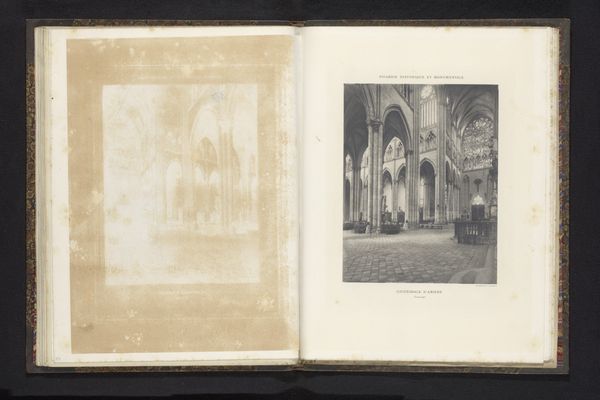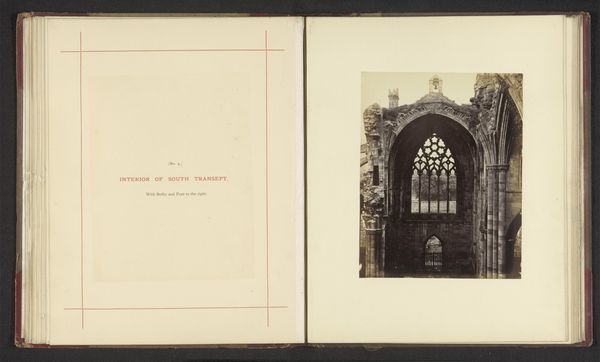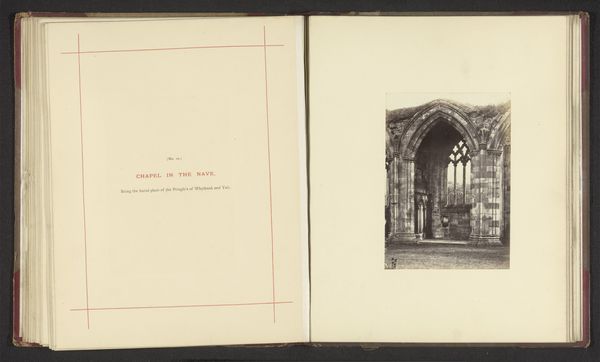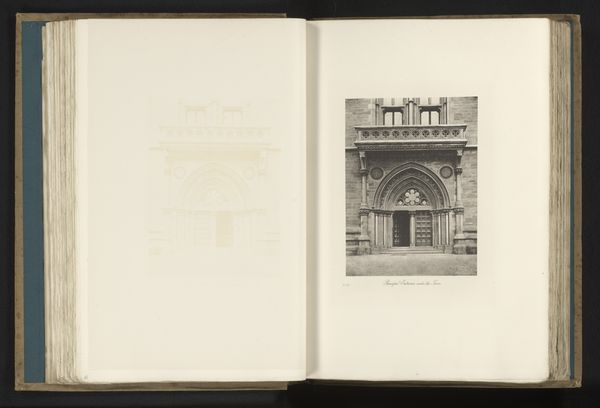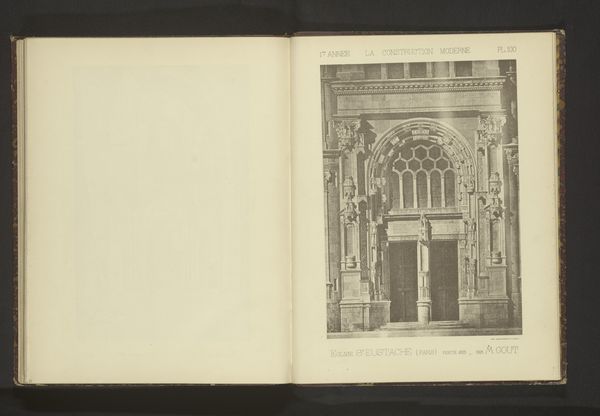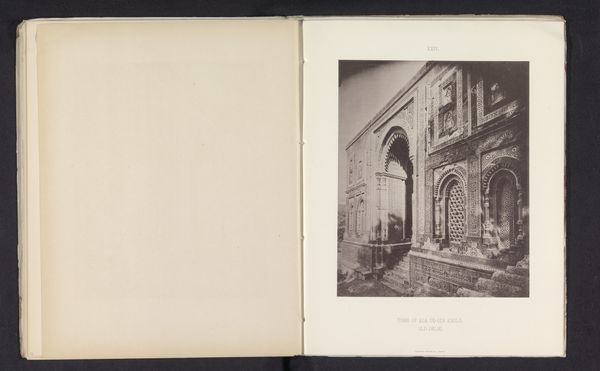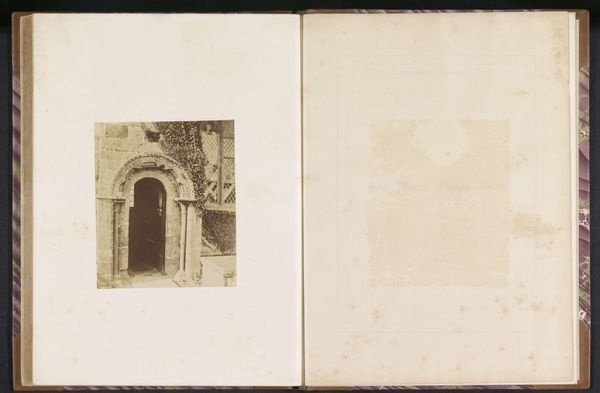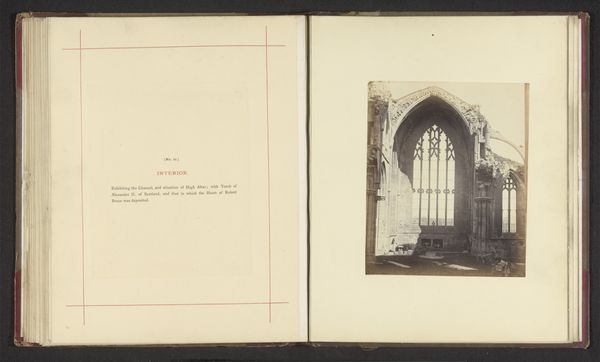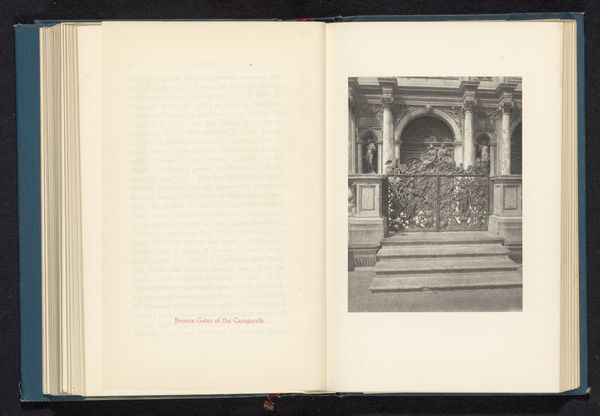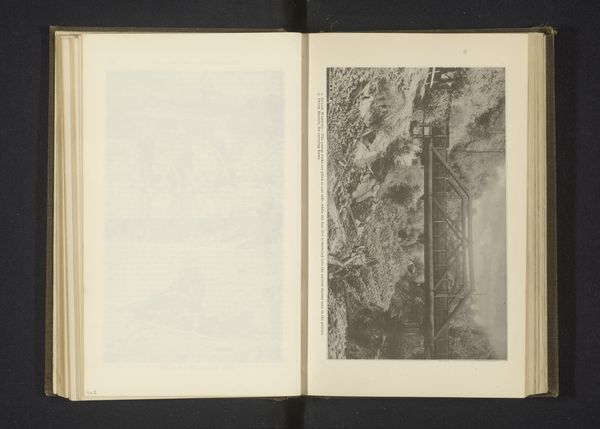
print, photography, architecture
#
medieval
# print
#
landscape
#
photography
#
geometric
#
cityscape
#
architecture
Dimensions: height 127 mm, width 165 mm
Copyright: Rijks Museum: Open Domain
Editor: Here we have a photograph titled "Distels," created before 1900 by W. Rawlings. It seems to capture a landscape, but presented on the opposite page is architecture. What intrigues me is this stark juxtaposition and wondering how these compositions dialogue across this single spread. What stands out to you? Curator: Note the way the photograph on the right uses geometry, and framing to compress architectural features. Look at the geometric detail of the portal. See how it rises to fill almost the entire pictorial field. And then examine how it appears flattened. In contrast, consider the opposite scene of flora, also meticulously composed but distinctly soft. Editor: So, you're highlighting the contrast in textures and form, moving between geometric exactitude and the fluidity of nature? Curator: Precisely. It is also essential to observe that we do not know the physical dimensions of the print, nor can we grasp its materiality, other than noting that they both are of a singular color palette and, thus, bound together as a collection. Consider what assumptions might be altered if we could physically hold and examine the artwork, thereby enriching our comprehension. Editor: That’s a really important point. I’m seeing now that without that crucial piece of information, any number of meanings might be construed. I came here today assuming meaning existed more in cultural context but instead you've suggested I observe materiality in order to discover any latent meaning. Curator: Context matters. However, rigorous visual examination can lead to further research into those vital dimensions of context. Editor: I see that so clearly now. Thank you, this has been incredibly insightful. Curator: A pleasure.
Comments
No comments
Be the first to comment and join the conversation on the ultimate creative platform.
